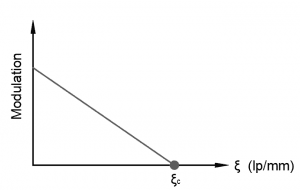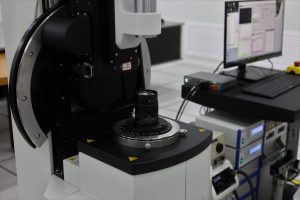Key Takeaways
- Resolution and contrast in optical system design are evaluated using the Modulation Transfer Function (MTF), which quantifies a lens’s ability to transfer contrast at specific resolutions from object to image.
- MTF integrates resolution and contrast into a single metric, aiding in comparing objective lenses and assessing how closely performance approaches diffraction limits.
- Analyzing MTF curves allows designers to optimize component combinations within optical systems to meet specific application requirements.
- MTF charts assist in determining ideal image heights at sensor positions and provide insights for optimizing optical system designs.
Understanding and Utilizing the Modulation Transfer Function in Optical System Design
The Modulation Transfer Function (MTF) is a vital parameter used to assess the performance of optical systems, ranging from simple lenses to complex imaging lens assemblies. It serves as a standardized quantitative measure for optical designers and microscopists to evaluate and compare lenses for various applications such as DNA sequencers, cell analyzers, slide scanners, and industrial inspection equipment. In this article, we will delve into the details of MTF, exploring its components, significance, and applications.
Resolution and Contrast in Optical Systems
Resolution and contrast are fundamental factors in achieving sharp and clear images. Resolution pertains to an imaging system’s ability to distinguish fine object details and is typically expressed in line-pairs per millimeter (lp/mm), where each line-pair consists of a black line followed by a white line. Contrast, on the other hand, measures an optical system’s ability to distinguish between light and dark areas in an image.
High-quality optics excel in transferring contrast at higher spatial frequencies, which translates to higher resolution. To assess this ability, MTF comes into play. MTF quantifies a lens’s capacity to transfer the contrast of a sample to an image using spatial frequency (resolution). Spatial frequency is defined as the number of line pairs per millimeter (lp/mm). Typically, MTF is determined using test charts featuring alternating black and white lines.


The Modulation Transfer Function Explained
MTF, as its name suggests, measures a lens’s capability to transfer contrast at specific resolutions from the object to the image. It combines both resolution and contrast into a single specification. As the line spacing decreases (frequency increases) on the test target, it becomes progressively challenging for the lens to efficiently transfer this decrease in contrast, resulting in a decrease in MTF.
The Significance of MTF
In traditional system integration, the resolution is often estimated based on the principle of the weakest link, assuming that the system’s resolution is solely limited by the component with the lowest resolution. However, this approach is flawed as every component within the system contributes to image quality, and the overall MTF of the system is the product of all the MTF curves of its components.
For instance, the imaging lens, camera sensor, image capture boards, and video cables each have their associated MTF. By analyzing the system MTF curve, designers can determine which combination of components will provide sufficient performance for a given application, considering factors like contrast requirements and resolution.
Applications of MTF in Optical System Design
MTF is a powerful tool to quantify the overall imaging performance of a system in terms of resolution and contrast. Understanding the MTF curves of each imaging lens and camera sensor within a system allows designers to make informed choices when optimizing for specific resolutions.
Furthermore, MTF finds use in various applications:
- Comparing Against the Diffraction Limit: MTF allows you to assess how closely a lens system’s performance approaches the theoretical diffraction limit, which represents the ultimate resolution.
- Comparing Different Objective Lenses: MTF aids in comparing the performance of different objective lenses, helping identify which lens provides higher contrast at specific spatial frequencies.
- Determining Ideal Image Height: MTF charts assist in determining the ideal image height at the sensor position, enabling assessment of performance differences between on-axis and off-axis sensor positions.
Conclusion
In conclusion, the Modulation Transfer Function is a pivotal parameter for evaluating and optimizing optical systems. By understanding resolution, contrast, and how MTF combines these factors, optical designers can make informed decisions to select the right components and achieve superior image quality for their applications. MTF data serves as a powerful tool in the hands of those seeking precision and excellence in optical system design.
GREAT ARTICLE!
Share this article to gain insights from your connections!



